If you’ve been on Iowa country roads or bike trails lately, you’ve probably seen plenty of goldenrods in bloom. You may also have seen today’s featured wildflower, especially in prairies or prairie remnants. After the jump I’ve posted several photographs of Stiff goldenrod (Oligoneuron rigidum), a member of the aster family that is native to much of North America east of the Rocky Mountains.
I took most of these pictures during a recent visit to Iowa State University’s Reiman Gardens, well worth seeing if you’re in the Ames area. The facility is best known for its incredible butterfly enclosure, containing dozens of tropical plants and hundreds of insect species not native to Iowa. For that reason, I was surprised to see a strip of native plants growing near the front entrance.
This post is also a mid-week open thread: all topics welcome. I’ll put up a separate thread later tonight or tomorrow morning with Iowa reaction to President Barack Obama’s televised address about the U.S. response to ISIS.
Most goldenrods are in the Solidago genus of the aster family, but stiff goldenrod was reclassified as part of the Oligoneuron genus. Apparently, that decision was controversial among botanists, and some authorities are still using the old species name, Solidago rigida.
The Minnesota Wildflowers site and the Eloise Butler Wildflower Garden site describe the features of this plant in detail, using correct botanical terms. In layman’s terms, stiff goldenrod is easy to pick out, thanks to the “tall unbranched stem with the flat-topped clusters of goldenrod type flowers.”
The Illinois Wildflowers site explains how to distinguish this plant from other goldenrods:
1) the foliage is quite pubescent and light green, with a felty appearance; 2) the basal leaves are quite large, assuming that they haven’t withered away; 3) the inflorescence consists of erect bunches of flowers; it does not radiate outward, nor form a narrow wand; 4) the individual flowers are slightly larger than those of other goldenrods.
Stiff goldenrod blooms during the late summer and early fall, but the plant is distinctive long before the flowers open. I took this picture in mid-summer at a restored prairie in Dallas County. The bright pink blazing star flowers grab your attention. Some yellow or gray-headed coneflower are blooming in the background, and rattlesnake master are flowering in the middle of the blazing stars. The central stem of a stiff goldenrod is noticeable near the right of the picture; closed buds are clustered near the top of the plant.
Outside Reiman Gardens in early September, a stiff goldenrod in full bloom is next to one with buds just starting to open.
Click here or here for better close-up shots of stiff goldenrod flowers. I don’t have the equipment or photography skills to capture that level of detail.
Several sources mention that stiff goldenrod does well in dry to moderate soils, but not as well in wet soils, where it can fall over or develop mildew on the leaves. You can see that mildew in the above photo, as well as in this shot of stiff goldenrod next to some kind of purple aster (I never can tell those apart).
Likewise, I don’t know which white aster species is growing around the stiff goldenrod in this shot:
Here stiff goldenrod is growing near some kind of false indigo, which bloomed long ago; the seed pods look like beans growing up the tall stem. I don’t know whether the dark pods to the right of the goldenrod are also a false indigo species.
The Illinois Wildflowers site discusses wildlife that use stiff goldenrod as a food source:
The flowers attract many kinds of insects, including long-tongued bees, short-tongued bees, wasps, flies, butterflies, and beetles. Monarch butterflies are especially attracted to the flowers. The caterpillars of several species of moths feed on various parts of this and other goldenrods (see Moth Table). Other insects that feed on this plant are Disonycta latifrons (Flea Beetle sp.), Microrhapala vittata (Leafminer Beetle sp.), Hesperotattix viridii (Spur-Throated Grasshopper sp.), and Corythucha marmorata (Lace Bug sp.). The Greater Prairie Chicken and Eastern Goldfinch eat the seeds to a limited extent. Many mammalian herbivores eat this plant, particularly during the early stages of growth and development. This includes the White-Tailed Deer, Cottontail Rabbit, Muskrats, and livestock. The latter tend to leave this plant alone when there are other sources of food available.
In this shot, you can see the tall stem and leaves of cup plant (nature’s birdbath) next to stiff goldenrod and purple aster.
Here’s a view from above of a stiff goldenrod blooming next to a cup plant that has already lost petals from its many flowers.

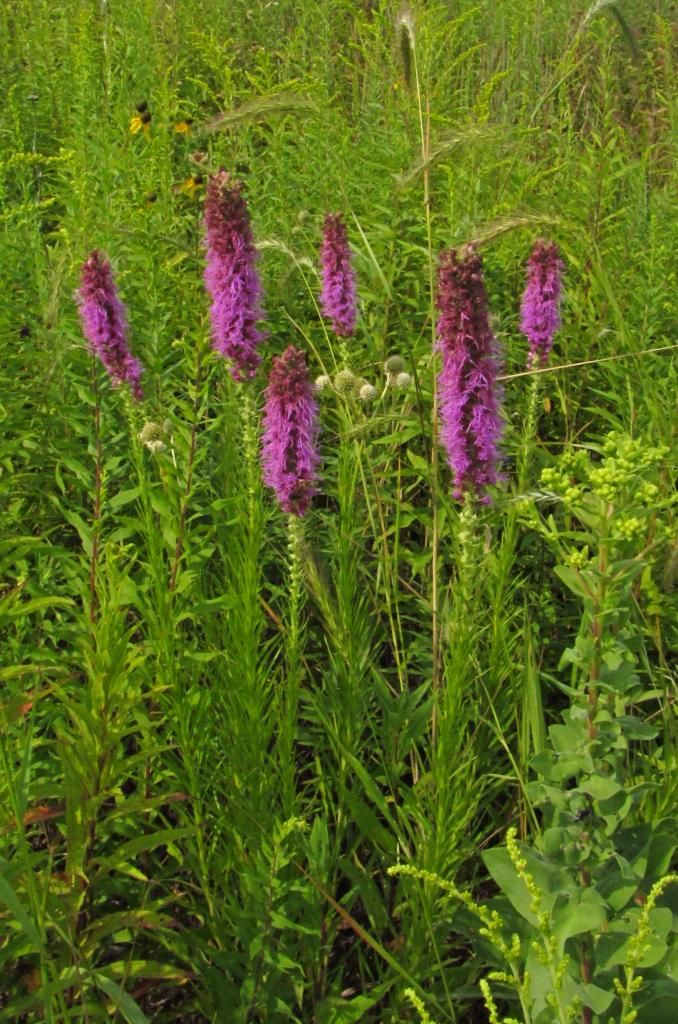
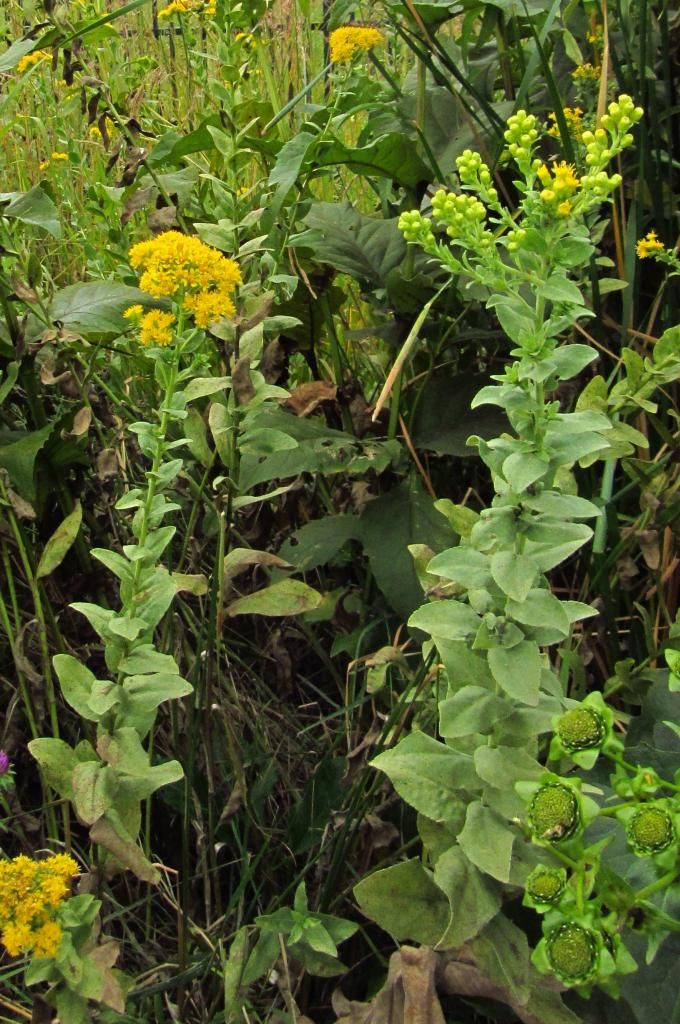
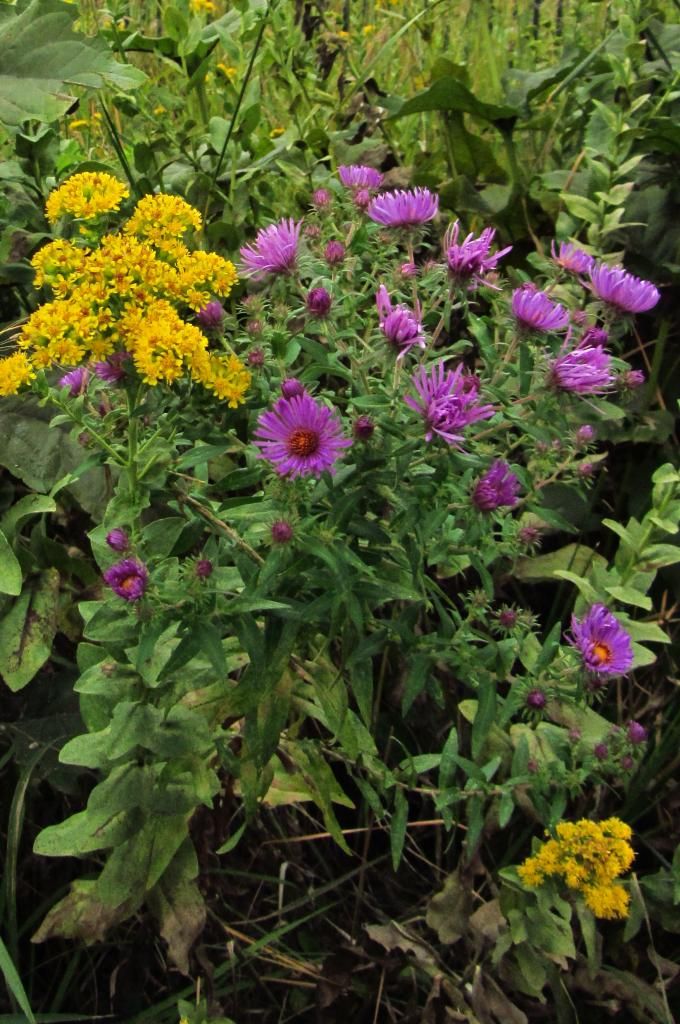
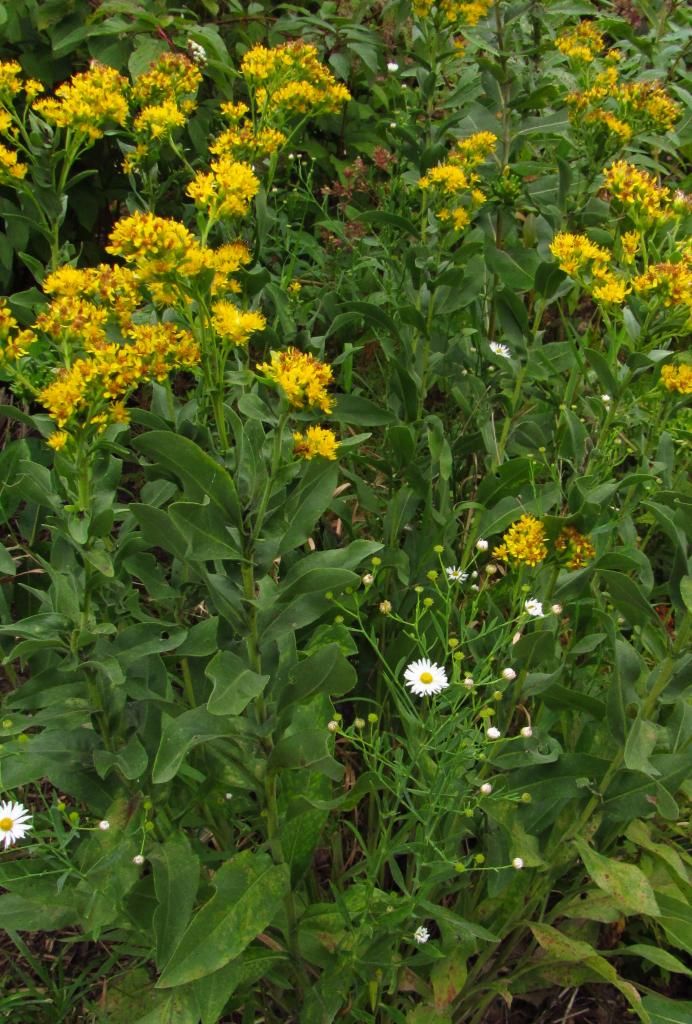
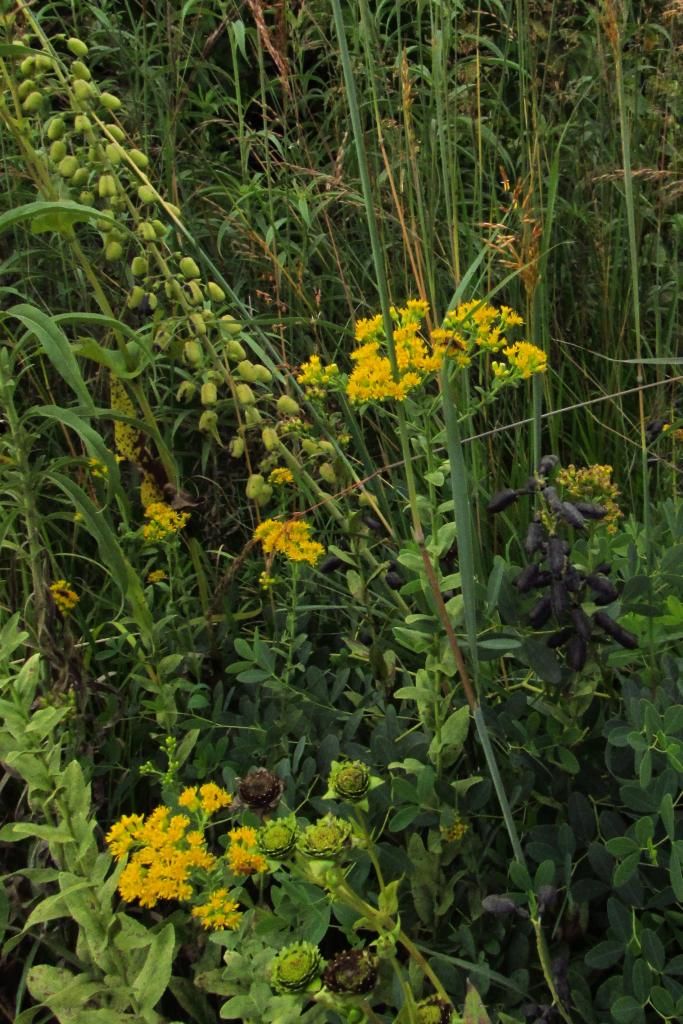

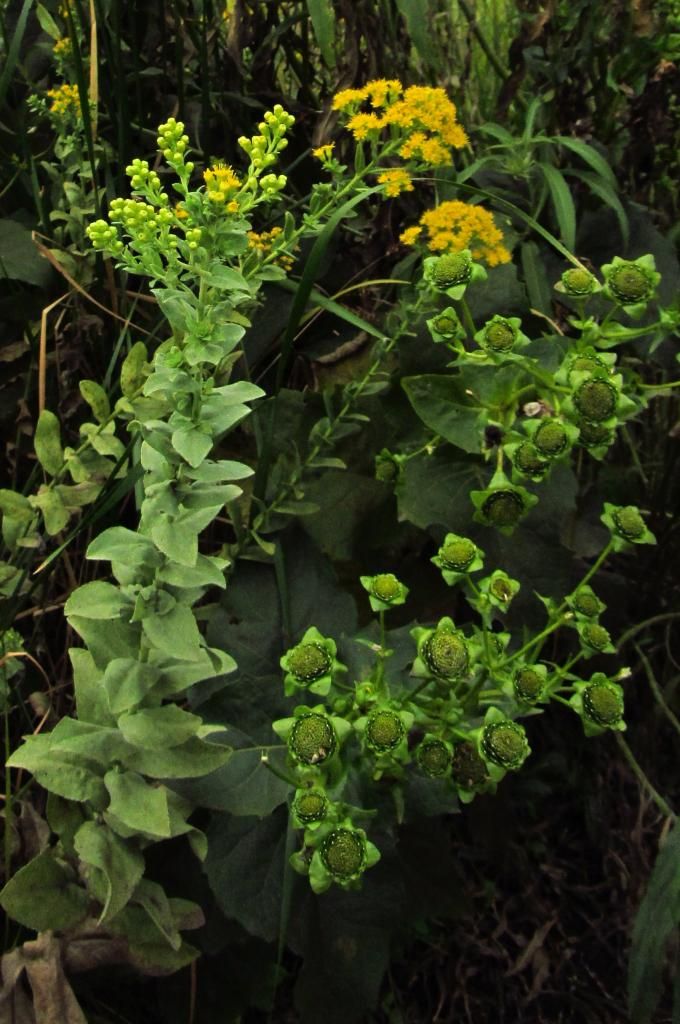
4 Comments
Open thread
Loras Poll – surprised to see Staci that far ahead. I think the race is hers to lose at the moment. I sure like her tv spot. It is positive, talks about what she will DO, mentions the kids, it is all good. She looks good, exhibits a little personality. I think it might be the best spot running in any race right now.
Young’s “meal” spot is very strange. It doesn’t resonate at all. And as mentioned in this blog, what a crock. He IS the dictionary definition of a Washington insider. That will occur to even the most casual observer. The anti Staci ad with the flower pots and organ restoration is very weak also. The never-purchased pots are old news. Can’t they think of something better?
Also surprised to see a tight race in 01. I thought Murph had it sewn up.
Other thoughts: by this time two years ago, GOP was carpet bombing in their targeted legislative races with negative mail. I could be wrong but I have not heard of any negative mail in any legislative race anywhere. I’m just going on third hand info. Maybe someone out there in BH land can set me straight. With TB on cruise control and plenty of money to spend, is this the calm before the storm? I know it is too early for legislative TV, but maybe the last few weeks will be filled with it. Maybe TB, with his race assured, will start dishing time off to legislative races.
rockm Thu 11 Sep 3:58 PM
not convinced by the Loras poll
For one thing, they have too many no-party voters for a midterm election. In 2006 and 2010, only about a quarter of the Iowans who cast ballots were independents. I do not think the IA-01 race is that close either.
I am not hearing about negative mail in the Iowa House and Senate races yet either.
A lot of people have commented to me that they find Young’s “good meal and good government” ad bizarre. I think the main point is to create warm, comfortable associations with the candidate. He’s not negative or angry.
desmoinesdem Thu 11 Sep 10:54 PM
First Hatch commercial
I just saw my first commercial for Hatch, a lot of yawning by different folk as the voice over talks about Branstad being there too long and doing wrong things.
In the QC on KWQC, about 0725 Friday morning.
conservative-demo Fri 12 Sep 7:31 AM
Purple aster
That aster looks like New England aster because of the foliage. The indigo is Baptisia leucantha, tall white indigo, unless the name has been changed again.
Very nice photos. Stiff goldenrod tends to come on strong in young prairie plantings, and then drops back somewhat as more conservative flowers and grasses start to take over.
PrairieFan Tue 9 May 1:00 AM